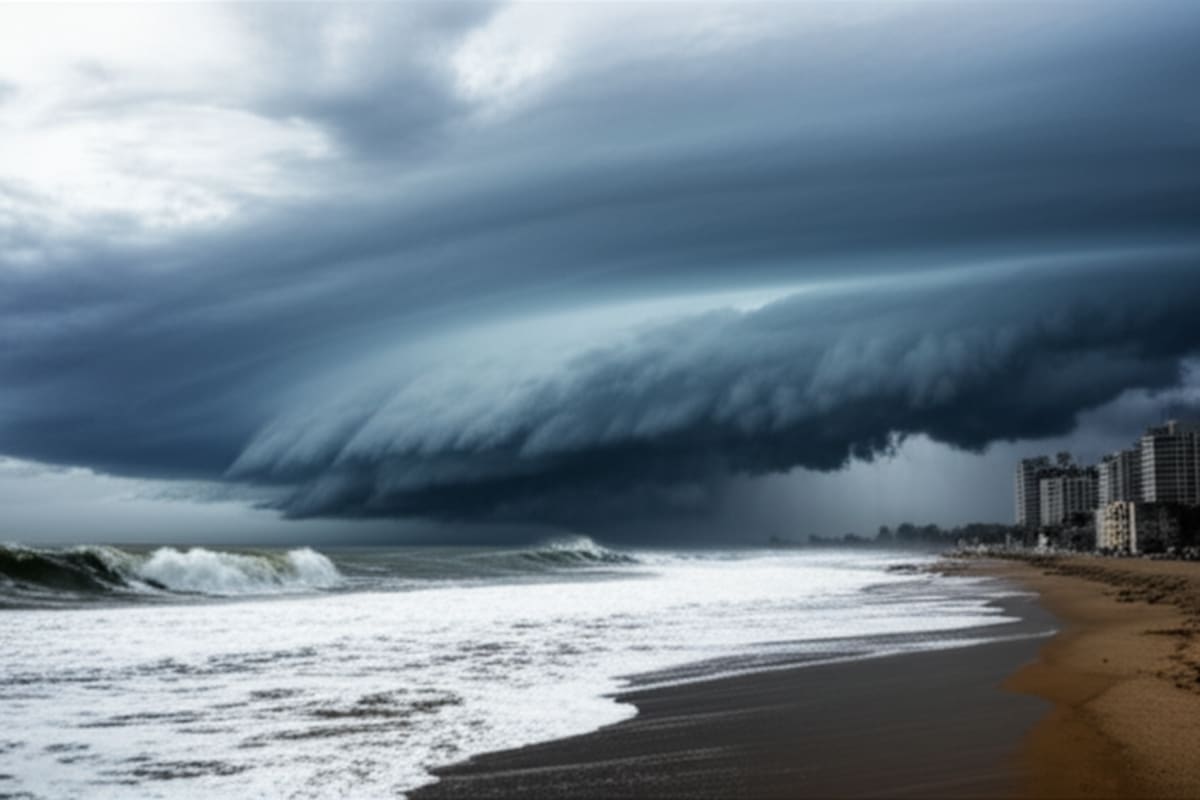Super Typhoon Ragasa: Death Toll Climbs, China Prepares for Landfall

Super Typhoon Ragasa: Death Toll Climbs, China Braces for ImpactSuper Typhoon Ragasa continues to wreak havoc across Southeast Asia, with the death toll rising to at least 25 and hundreds missing
Background
The storm, packing sustained winds of 185 km/h (115 mph) and gusts exceeding 220 km/h (137 mph), is now barreling towards China's eastern coast, prompting mass evacuations and heightened alert levels
The story matters because Ragasa represents a significant threat to life and property, highlighting the increasing vulnerability of coastal communities to extreme weather events exacerbated by climate change
Understanding the storm's trajectory, impact, and the response efforts is crucial for preparedness and resilience in the face of future disasters
Typhoons are a common occurrence in the Western Pacific, particularly during the late summer and autumn months.
These powerful storms form over warm ocean waters and can bring devastating winds, torrential rainfall, and storm surges
Ragasa, which developed rapidly over the past few days, is one of the strongest typhoons to threaten the region this year.
Its rapid intensification is attributed to favorable atmospheric conditions and exceptionally warm sea surface temperatures
The affected regions have a history of dealing with typhoons, but the increasing intensity and frequency of these storms pose a growing challenge.
Past typhoons have caused widespread damage to infrastructure, agriculture, and livelihoods, underscoring the need for improved disaster preparedness and mitigation strategies
Current SituationAs of today, the typhoon has already caused significant damage in the Philippines and Vietnam. At least 25 people have been confirmed dead, and hundreds are still missing, primarily due to landslides and flash floods.
Thousands have been displaced from their homes and are seeking shelter in evacuation centers.
China has issued a red alert, the highest level of warning, and is mobilizing resources to prepare for Ragasa's expected landfall
More than a million people have been evacuated from coastal areas, and fishing boats have been ordered to return to port. Emergency services are on standby, ready to respond to any potential impact.
We are facing a formidable challenge," said Li Wei, Director of the China Meteorological Administration. "Ragasa is an extremely powerful typhoon, and we are taking all necessary precautions to minimize its impact.
ImplicationsThe immediate implications of Ragasa's landfall in China include widespread power outages, transportation disruptions, and potential damage to infrastructure. Agricultural areas are also at risk, with the potential for significant crop losses.
The long-term consequences could include economic setbacks, displacement of communities, and increased strain on resources.
Potential for widespread flooding and landslidesDisruption to transportation and supply chainsDamage to critical infrastructure, including power grids and communication networksEconomic losses due to crop damage and business closuresFurthermore, the increasing frequency and intensity of typhoons like Ragasa raise concerns about the long-term impacts of climate change on the region
Scientists warn that rising sea temperatures and changing weather patterns are likely to exacerbate these events, making coastal communities even more vulnerable
Future OutlookThe next 24-48 hours are critical as Ragasa makes landfall in China
The focus will be on ensuring the safety of evacuated populations, providing emergency relief to affected areas, and assessing the extent of the damage
In the longer term, there is a need for increased investment in disaster preparedness, including improved early warning systems, resilient infrastructure, and community-based adaptation strategies
The international community is also offering assistance to the affected countries, providing aid and support to help them recover from the disaster.
The United Nations has pledged to provide humanitarian assistance, and several countries have offered to send relief supplies and technical expertise
In conclusion, Super Typhoon Ragasa serves as a stark reminder of the power of nature and the vulnerability of coastal communities to extreme weather events
While immediate efforts are focused on saving lives and providing relief, there is a need for long-term strategies to mitigate the impacts of climate change and build resilience to future disasters
The coming days will be crucial in determining the full extent of the damage and the path to recovery.
